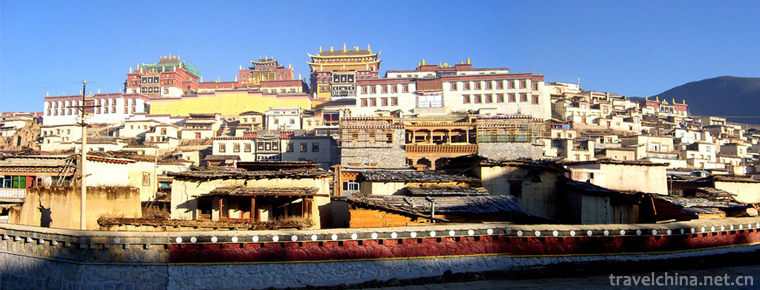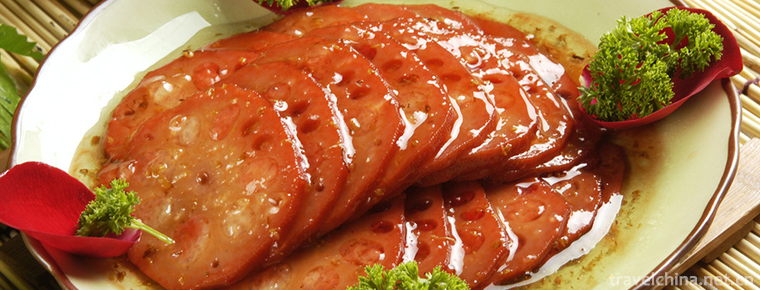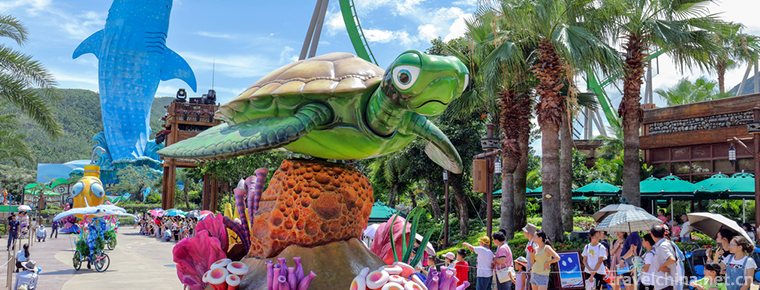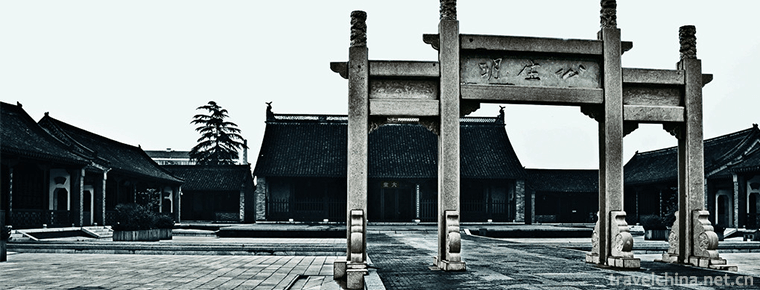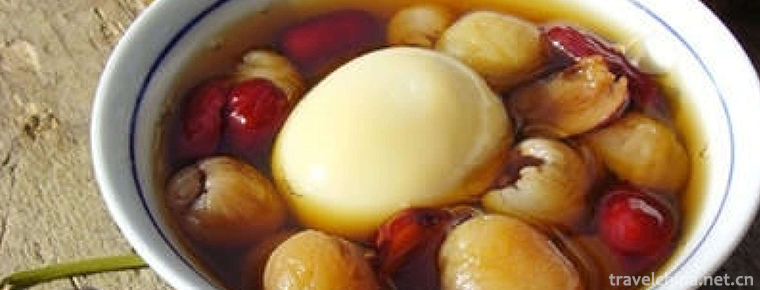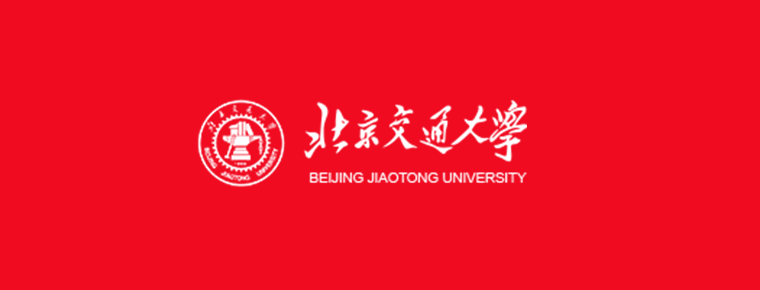Yao Folk Songs
Yao Folk Songs
Yao folk song is a unique music type belonging to the minority nationality of southern China - Yao nationality.
Yao folk song is a popular Yao folk song in Ruyuan Yao Autonomous County of Shaoguan City. Yao language is called "Saihua handle". It is translated into Chinese to mean "the language that competes for flowers". It is the second language that Guoshan Yao conveys information and communicates with each other. The tunes of folk songs of Guoshan Yao living all over the world are roughly the same, while those of Ruyuan Guoshan Yao have higher and longer tunes, which are called folk songs. Ruyuan Yao folk songs can be divided into two kinds, one for chanting songs, the other for shouting songs, chanting in a low voice to lead the singing and teaching, shouting songs to shout in the distance. Yao folk songs have become the best treasure house of knowledge for future generations to study and exchange the history and culture of Guoshan Yao.
In 2014, the State Council announced that Shaoguan Yao folk songs were included in the National Intangible Cultural Heritage Representative project list, which became the Fifth National Intangible Cultural Heritage Representative project in Shaoguan.
On June 7, 2008, the Yao folk songs declared by Longhui County of Hunan Province were listed in the second batch of national intangible cultural heritage list with the approval of the State Council.
historical origin
Yao nationality is mainly distributed in the mountainous areas of Guangxi, Hunan, Yunnan, Guangdong, Jiangxi, Hainan and other provinces. It is a typical mountainous nationality in southern China. Yao nationality has its own language, Yao language belongs to the Yao language branch of the Sino-Tibetan language family, but the situation is more complicated. More than half of the people speak Mian language, which belongs to the Yao language branch of the Miao-Yao language group; two fifths of the people speak Bunu language, which belongs to the Miao language branch; some in Guangxi region speak Laga language, which belongs to the Zhuang-Dong language group. There are many Chinese and Zhuang languages, but there is no native language. Generally speaking, Chinese is the common language.
Yao folk songs run through all fields of social life. Yao people, who have grown-up men in their families, have to choose a day for their "Durong" before the Spring Festival, and those who want to get married should also strive to hold it before the Spring Festival. But whether it is Durong, marrying a daughter, or visiting relatives and friends, Yao people use songs to speak for themselves. It can be said that no song is no drama. Therefore, the Yao people are good at singing, and they have their own characteristics and profound thoughts.
Qu Dajun, a poet of the Qing Dynasty, once wrote a poem "Yao custom is the most popular song, men and women mix together, singing a hundred harmony". Yao folk songs have a wide range of contents, ranging from astronomy and geography to trivial matters for ordinary people; from the beginning of Pangu to the immediate eyebrows; from the changes of dynasties to the historical changes, to the wedding and funeral celebrations in farming, they are all articles. When did Yao folk songs come into being? There is no way to study it, but it is closely related to the introduction of Han culture. Folk Songs in Yao Stories
There is such a narration in "Three Sisters": "Confucius made books and Yan Muslim religion, and the three sisters are famous all over the world. From the content of Yao Ge, Confucius'Confucianism still has traces to be found. Yao songs are generally seven-character style, not rhyming, but attach great importance to contrast and parallelism. Yao folk songs have distinct regional characteristics, which are reflected in the melody of folk songs. The melody of Yao folk songs is gentle and graceful, without the kind of high-pitched magnificence, but it is as soft and distant as a clear spring brook. But different regions, tunes are also very different. The tunes of Yao people living in Wenshan 8 counties are basically the same as those of Qujing Shizong and Honghe Jin, but there are still differences. The mouth of Honghe River, Tianlin of Guangxi, Lingyun and so on are quite different. The tunes are totally different, which may be related to the frequent migration of Yao people over a long period of time.
According to the general classification method of Yao people, it can be divided into two categories. One is the "Qiulian" folk song. There are three pronunciations of a Chinese character in Yao language. One is the speech pronunciation, the other is the folk song pronunciation, and the other is the chanting pronunciation. "Qiulian" folk song is sung with folk song pronunciation, which belongs to the more commonly used category. Beginners must first learn how to sing "Qiulian". The second category is "vernacular" folk song, that is, to sing with the voice. If Yao folk song is divided into three realms: upper, middle and lower, the singer who can sing "vernacular" folk song will reach the intermediate realm. Because "vernacular" folk songs can be understood even by children, this singing method is very humorous, but the artistic conception is very profound, not everyone can understand, not every singer can sing. From the content and function, it can be divided into etiquette, education, narration, sacrifice, love, riddle guessing, festivals, humanities and so on. The content is very extensive. If Yao folk songs are understood only from the literal meaning of Chinese characters, it will not work, and the meaning is not related to each other. In recent years, due to the increasing exchanges between Yao traditional culture and the outside world, some singers who are proficient in Chinese language and literature have been trying to unify Yao folk songs with the meanings expressed in Chinese characters, and have achieved certain results. This is a gratifying thing, a reflection of the progress of civilization of the times and a conformity to the development of history. Inevitable requirement.
artistic characteristics
From the melody point of view, Yao music has a variety of tunes, including joy, anger, sadness and music. According to preliminary understanding, there are no more than 20 kinds of music tunes of Yao nationality in China. For example, Mian Yao's eight songs in Pan Wang Da Ge, namely "Sanfen Leisure Song", "Sanjian Deep Song", "Lotus Leaf Cup Song", "Nanhua Song", "Feijiangnan Song", "Yaliu Song", "Niujiao Jianqu" and "Jiaxian Song", "Xiangli Song" and "Shigong Diao" of Lajiayao, and "Yohi Song" and "Shigong Diao" of Pingdi Yao.《 Ah Bo Ge, Bunuyao's Wine Song, Sanwang Ge and Ao Yao's Loud Song are numerous. These tunes have national and local color. Many ballads are named for their linings. Among them, Wine Song, Butterfly Song, Lafa Song and Xiangli Song are the most famous.
Liquor Song, with its rough, high-pitched, thick, short, concise and powerful melody, brings people spiritual uplift.
Butterfly Song is a female duet song with rich linings, strong and weak rhythm and rich rhythm. After 1949, Yao folk singers often performed stage performances with it, which was liked by the audience and highly praised by music experts.
Lafa Song is a two-part song. The melody is characterized by grace, lyricism, softness and euphemism. Let the audience feel like a string of pearls on a jade plate.
There are two kinds of songs: singing and shouting. The singing is soft, mellow and sweet, and the shouting is high-pitched and unrestrained, often echoing the echo of Yaoshan Mountain.
"Loud Song" is a kind of collective sacrificial song with solemn and heavy melody. Sometimes by dozens or even hundreds of people to sing in chorus, with the trend of overwhelming mountains and overwhelming seas.
In daily life, Yao people often use songs instead of languages. For this reason, Yao people began to learn to sing from an early age. The Yao family teaches their elders on New Year's Eve every year.
The younger generation sings. Men learn to sing "congratulations song" of red and white joys, etiquette song of treating people and objects, morale song of producing labor, knowledge song and so on. Women learn to sing "Embroidery Song" and "Birth Song" and so on. These songs have a certain style, so that children learn from an early age, out of society, a good deal. Usually, the old people like to sing a long narrative song after tea and dinner. Often, a story is sung all night, just like a mountain, a stream, and a beautiful one. Because singing is so popular, Yao people go up to the mountains to work, sing impromptuly, answer with songs, or fight with their throats, you sing me and I, full of fun. Yao Ge is an important form of literary and artistic activities in Yao people's lives. It is the main way for them to communicate their souls and experience. Therefore, there are Yao songs everywhere, whether in production or in folk life, such as love, marriage, going to villages, visiting relatives and friends, etc. Jianghua Yao people often use songs to express their feelings and aspirations in their production and life. Whether it is sacrifice, migration, memorial or love, marriage and funeral, celebration, welcoming guests and seeing off guests, from astronomy and geography to trivial matters of ordinary people, from ancient times to the beginning, and from near to the eyebrow, they can express their aspirations in the form of songs. Yao's songs include the long epic "Miluotuo" and the anthology of ancient songs "Panwang Ge", as well as some popular ballads, which are short and refined, rich in content and diverse in style. The language, tune and sentence structure of Yao Ge are various. There are 5, 7, Qupai, long and short sentences in the sentence structure. With long and short sentences as the main part, there is no definite constitution, so it can be said that they are all free bodies. From the content point of view, "Panwang Ge" is an ancient song sung at the time of returning Wang Wan's wish. The lyrics are more than 2,000 lines, including the origins of human beings and nations, the formation of heaven, earth, sun, moon, rivers, rivers and all things, the hardship of the creation of human ancestors, etc. They can be called an epic of the Yao nationality with rich content and fantastic imagination. There are a lot of love songs in Yao songs. Love songs are divided into love songs, love songs, separate songs, send love songs, love and hate songs, free songs, pan songs and so on. Among them, the tray song is a song sung by young men and women in their intercourse to examine each other's talent, wisdom and sincerity. It is interesting for men and women to ask and answer questions. There are also many folk songs, production songs, bitter songs, struggle songs and so on. Among them, the production song, also known as seasonal song, mainly describes the agricultural activities throughout the year, but also the song of production education for young people.
Representative Works
Yao nationality is a people who can sing. Qu Dajun, a poet of the Qing Dynasty, once wrote a poem "Yao custom is the most popular song, men and women mix together, singing a hundred harmony". From the melody point of view, Yao music has a variety of tunes, including joy, anger, sadness and music. According to preliminary understanding, there are no more than 20 kinds of music tunes of Yao nationality in China. For example, Mian Yao's eight songs in Pan Wang Da Ge, namely "Sanfen Leisure Song", "Sanjian Deep Song", "Lotus Leaf Cup Song", "Nanhua Song", "Feijiangnan Song", "Yaliu Song", "Niujiao Jianqu" and "Jiaxian Song", "Xiangli Song" and "Shigong Diao" of Lajiayao, and "Yohi Song" and "Shigong Diao" of Pingdi Yao.《 Ah Bo Ge, Bunuyao's Wine Song, Sanwang Ge and Ao Yao's Loud Song are numerous. These tunes have national and local color. Many ballads are named for their linings. Among them, Wine Song, Butterfly Song, Lafa Song and Xiangli Song are the most famous. ?
Liquor Song, with its rough, high-pitched, thick, short, concise and powerful melody, brings people spiritual uplift. Butterfly Song is a female duet song with rich linings, strong and weak rhythm and rich rhythm. After 1949, Yao folk singers often performed stage performances with it, which was liked by the audience and highly praised by music experts. Lafa Song is a two-part song. The melody is characterized by grace, lyricism, softness and euphemism. Let the audience feel like a string of pearls on a jade plate. There are two kinds of songs: singing and shouting. The singing is soft, mellow and sweet, and the shouting is high-pitched and unrestrained, often echoing the echo of Yaoshan Mountain. "Loud Song" is a kind of collective sacrificial song with solemn and heavy melody. Sometimes by dozens or even hundreds of people to sing in chorus, with the trend of overwhelming mountains and overwhelming seas. At the same time, the Yao dance music echoes with it is particularly outstanding.
Inheritance Significance
The first is the transmission of information. Yao people communicate information to each other and write letters to their relatives, friends or lovers in the distance. Yao people call this kind of ballad "Xinge". In the Yao people, the history of exchanges in this form has been very long. It is a unique product of the Yao people's history and society. It is related to the frequent and long-term migration of the Yao people. The content of "Xinge" is rich and colorful. Some reflect the dark rule of the old society, some reflect the migration of Yao nationality in history, some are used to search for lost brothers and sisters, some reflect the free love of young men and women, and so on. Another prominent feature of "Xinge" is its openness. It is not confidential. During the leisure time or Spring Festival, when visiting relatives of Yao people, no matter which village they visit, they can open it to sing in order to achieve mutual exchanges and enhance friendship. Secondly, emotional life. Yao folk song is the main way for Yao young men and women to express their feelings and communicate their souls. Every young man and woman who visits villages in the evening, they have to put up a song hall to sing to each other. In the song, if you agree with each other, you can set your life in private. Some classical and famous sentences describing love are recognized as the absolute sentences of Yao ballads and are often quoted in love songs of men and women. For example, "Love flowers is like ink and paper, paper rots into mud and ink is inseparable". "A sister in love is like a vine twining a tree, cutting its roots and breaking them. The dead vine is entangled with life and death, and the dead vine is entangled with life and death. There are many such sentences in Yao ballads, just like bright pearls embedded in the treasure house of Yao folk culture. The third is to celebrate happiness. When Yao people have weddings, relocations, birthdays or visiting relatives from far away during the Spring Festival, the host family will try every means to invite many singers to sing folk songs.
Singers usually sing in pairs according to their master's arrangement or two men and two women's free combination. First, they sing a few songs to bless their master, then they can play freely and sing whatever they want, as long as they can add a festive atmosphere to their host's family. Fourth, the role of Dujie. Dujie is a rite of passage for Yao men, most of which are held before the Spring Festival. Every procedure in the ceremony must be accompanied by a folk song. The content of the folk song is handed down by the predecessors, which reflects the content and purpose of the procedure. Therefore, there is the saying that "the law is incomplete and the folk songs are supplemented". When Master Du Jiezhong led disciples to dance "Hang Chao", the song said, "Congratulations to Master Gongshou on Yugui, thanks to Master Xuan for his wisdom. Master Xuan cited the Master's case and set foot before the Master met the Emperor. Walking in seven stars, it leads to the ten palaces of Kyushu. After nine days of merit and virtue, Yin and Yang met with new officials. The content of this song truly reflects the true content of the procedure of "pilgrimage". Fifth, the role of the wedding ceremony. If folk song is only a foil in Dujie, then folk song is the most important part in wedding ceremony. All wedding procedures are performed in the form of folk songs. If the welcoming team arrives at the woman's home, they can't sit down at will. They should ask for seats by singing "Question Seat" song. For example, "Butterflies are dancing on stones and don't know where to settle down." Octagonal balconies are full of officials, where are the birds hiding in the forest. Where does the official not sit at the door, please show the way. This pond deep fish loves, offends the public Moxie. At this time, the welcome representative would like to use folk songs to thank the bride's parents, singing: "Married Dragon from the East China Sea, swimming to one beach after another. Farewell from father and mother to find the way, in the month Chang'e with Nanshan. In order to find the way of King Pan's past life, he offended his parents. One thanks for the hardship of raising children, and two thanks for the first nine relatives." The unique form of Yao folk song pair singing reflects Yao's profound historical culture and simple national characteristics. The distinct personality of Yao folk songs is an important part of building a large province of national culture.

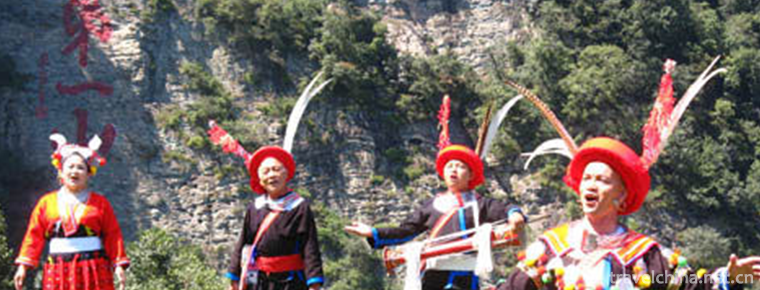
-
Naturalization TempleSongdan Songzanlin Temple
Kardan Songzanlin Temple is the largest Tibetan Buddhist monastery in Yunnan Province.
Views: 134 Time 2018-10-20 -
Steamed Lotus Root Stuffed with Glutinous Rice
Osmanthus sweet-scented glutinous rice lotus root, also known as honey juice glutinous rice lotus root, is one of the characteristics of the traditional famous spots in the south of the Yangtze River..
Views: 179 Time 2018-10-27 -
Huaian Government Office
Huai'an government office is located in Huai'an City, Jiangsu Province, which is a national AAAA tourist attraction. It is located in Dongmen Street, Huai'an District, the old city of Huai'an, north o.
Views: 91 Time 2019-01-17 -
Fried egg with Longan
Oyster with longan is a dish name. Its raw materials have certain medicinal effects of traditional Chinese medicine and have medicinal effects on human body..
Views: 261 Time 2019-03-24 -
Bru
Bru, Mongolian means throwing. Competitions are divided into two categories: long throw and accurate throw, mostly held in festive festivals. The long throw is to decide .
Views: 458 Time 2019-04-04 -
Yidege Ink Making Skills
Yidege is a local traditional handicraft in Beijing. It is well-known for producing ink. The products have bright ink, rich and light colors, fluent writing, moderate concentration, strong fragrance, .
Views: 172 Time 2019-07-11 -
Beijing Jiaotong University
Beijing Jiaotong University is a national key university directly under the Ministry of Education, jointly constructed by the Ministry of Education, the Ministry of Transport, the Beijing Municipal Pe.
Views: 154 Time 2019-09-06 -
Beijing University Of Agriculture
The predecessor of Beijing University of Agriculture, Tongxian agricultural school, Hebei, was founded in 1956. In 1958, Tongxian agricultural school in Hebei province was merged with Beijing agricult.
Views: 324 Time 2019-09-06 -
Han Feizi
Han Feizi is a collection of works of famous thinkers and Legalists Han Fei during the Warring States period. Han Feizi was compiled by posterity after Han Fei's death. According to hanshuyiwenzhi &qu.
Views: 92 Time 2019-09-07 -
History of Mianyang
Mianyang, located in the south of Mianshan mountain, was named Mianyang in 1913 according to the ancient meaning of "south mountain and North Water" as "Yang"..
Views: 131 Time 2020-12-14 -
Nanchong transportation
In 2019, the total mileage of Nanchong highway is 23100 km, including 574.06 km of expressway. The highway freight turnover was 10.921 billion ton kilometers, down 1.6% from 2018, and the highway passenger transportation turnover was 2.511 billion person kilometers, 17.7% lower than that in 2018..
Views: 342 Time 2020-12-17
